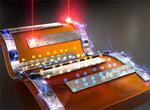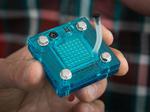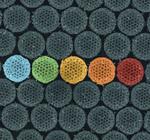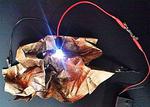Other

“Developed by the Blue Solutions, Bolloré Group, the shuttle undergoes quick charging at charging stations while passengers board or alight Nanyang Technological University, Singapore (NTU Singapore) and BlueSG Pte Ltd, a subsidiary of Blue Solutions owned by the Bolloré Group …
“Extremely fine porous structures with tiny holes – resembling a kind of sponge at nano level – can be generated in semiconductors. This opens up new possibilities for the realization of tiny sensors or unusual optical and electronic components. There have already …

“Professor Minyang Yang from the Department of Mechanical Engineering and his team developed a high-energy, flexible micro-supercapacitor in a simple and cost-effective way. Compared to conventional micro-batteries, such as lithium-ion batteries, these new batteries, also called supercapacitors, are significantly faster …

“New model measures characteristics of carbon nanotube structures for energy storage and water desalination applications. Using electrodes made of carbon nanotubes (CNTs) can significantly improve the performance of devices ranging from capacitors and batteries to water desalination systems. But figuring …

“Imagine printing off a wristband that charges your smartphone or electric car with cheap supplies from a local hardware store. That’s the direction materials research is heading at Brunel University London where scientists have become the first to simply …

“2-in-1 device also uses supercapacitor to store energy that could power computers and smartphones UCLA researchers have designed a device that can use solar energy to inexpensively and efficiently create and store energy, which could be used to power electronic …

“Synthetic microspheres with nanoscale holes can absorb light from all directions across a wide range of frequencies, making them a candidate for antireflective coatings, according to a team of Penn State engineers. The synthetic spheres also explain how the leaf …

“Graphene – a one-atom-thick layer of the stuff in pencils – is a better conductor than copper and is very promising for electronic devices, but with one catch: Electrons that move through it can’t be stopped. Until now, that is. Scientists …

“The IoT Solar Harvester simplifies a problem: harvests ambient energy to power an IoT sensor and stores excess energy for later use. Energy is present everywhere -it just needs to be harvested- and the reason is simple: to free sensors …

“Using a simple layer-by-layer coating technique, researchers from the U.S. and Korea have developed a paper-based flexible supercapacitor that could be used to help power wearable devices. The device uses metallic nanoparticles to coat cellulose fibers in the paper …
